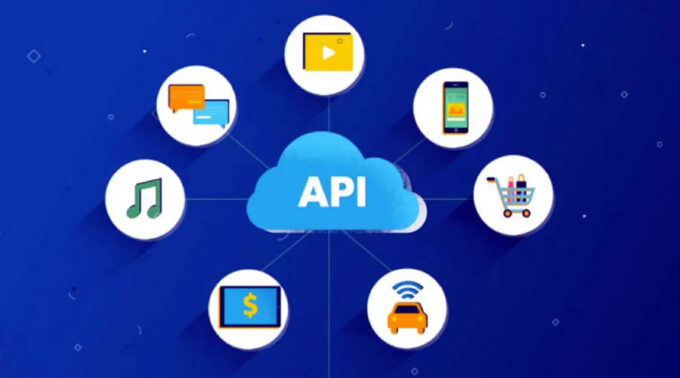Social media APIs are a crucial tool for businesses and developers alike, allowing them to easily access and integrate data from popular social networks. With just a few lines of code, developers can take advantage of the vast amounts of data available through these APIs. From gaining insight into customer interests and trends to optimizing advertising campaigns and more, there are many possibilities for leveraging social media APIs.
The first step in getting started with a social media API is to decide which platform you want to use. Popular platforms such as Twitter, Facebook, and Instagram offer powerful APIs that allow developers access to user profiles and posts.
Once you have chosen your platform of choice, the next step is to sign up for an API key. An API key is a unique identifier that grants access to the platform’s data. Different social media platforms have different procedures for signing up for an API key, so be sure to check out their documentation and tutorials.
Once you have your API key, you can begin integrating social media data into your app. Different platforms offer different types of APIs which allow developers to access and manipulate data in various ways. For example, some APIs allow users to post messages or search for specific information while others provide more detailed analytics and insights.
Finally, be sure to take advantage of the wealth of tutorials and resources available online to help you get started with social media APIs. From beginner-friendly guides to more advanced topics such as authentication and security, there are plenty of resources available that can help you become an expert in leveraging social media data for your app or website.
Using social media APIs is a great way to engage customers, gain insights into their interests, and provide them with a better experience. With the right knowledge and resources, you can easily get started integrating social media data into your app.
What are the benefits of using social media APIs?

The use of social media APIs has become increasingly popular in recent years as more companies and organizations seek to leverage the power of social media platforms for their marketing, communication, and data analysis efforts.
By using a Data365 social media API, businesses can access real-time data about their customers, followers, mentions, and activity on various platforms, allowing them to craft more effective marketing campaigns and increase their reach.
Additionally, APIs can be used to automate some of the processes involved in managing social media accounts, such as scheduling posts or even analyzing sentiment from user comments.
Social media APIs also allow businesses to better understand their target audiences and customize content for them, resulting in higher engagement levels and a better return on their investment.
Finally, social media APIs can help companies and organizations measure the effectiveness of their campaigns and assess the impact of their activities on various platforms. By understanding how users are engaging with their content and which audiences respond best to different types of messages, businesses can refine their strategies for maximum reach and engagement.
Overall, the use of social media APIs can be a great way for businesses to increase their reach and engagement while also gaining access to valuable data that can help them refine their strategies. With Data365, businesses have the advantage of comprehensive APIs that support various platforms and provide robust analytics tools for more informed decision-making.
How do social media APIs work?

Social media APIs are a powerful system used by developers to access and interact with data from popular social media sites such as Facebook, Twitter, YouTube, Instagram, and more. In simple terms, they allow developers to have real-time access to the data available on the web platform of each site.
For example, an API can be used to read and write data from a user’s Facebook profile. It can also be used to post messages on the user’s timeline, retrieve posts on their wall, or even get access to their friend list. The possibilities are endless, as APIs allow developers unprecedented control over social media content.
The basis of these APIs is the RESTful architecture. This means that developers can send requests via a URL to the API, and get back responses in either XML or JSON format. The responses contain all of the requested data, which can then be parsed and used by the developer however they see fit.
In addition to the RESTful architecture, many social media APIs also make use of OAuth. This is an additional layer of security that ensures only authorized users can access certain data or services. By using this protocol, developers can ensure that the user’s personal information remains secure.
Overall, social media APIs are a powerful tool for developers to use when interacting with social media data. They provide a secure and easy way to access, manipulate and store data from popular sites like Facebook, Twitter, YouTube, and more. With an API, developers can create powerful applications that interact directly with the user’s profiles on these sites.
What are some of the popular uses for social media APIs?

Social media APIs are becoming increasingly popular as a way for businesses and organizations to connect with their customers, share information, and engage in meaningful conversations.
With the help of social media APIs, businesses can integrate their services into popular social media networks like Facebook, Twitter, Instagram, and more. This allows them to access audiences that may not visit their website, expand their reach and presence on the web, and interact with customers in new and innovative ways.
Some of the popular uses for social media APIs include:
-Integrating data from third-party services into a business’s website or application. This can be used to create personalized experiences for customers that have logged into your website or app.
-Creating custom content for users based on their behavior and preferences. For example, a business can create targeted promotions and offers that are tailored to individual customers.
-Monitoring conversations about the brand or product on social media platforms like Twitter, Instagram, and Facebook. This helps businesses gain insights into customer sentiment and better understand customer needs and expectations.
-Engaging with customers in meaningful discussions about their experiences, preferences, questions, and more. This can help businesses better understand their customers and build relationships that are based on trust and loyalty.










